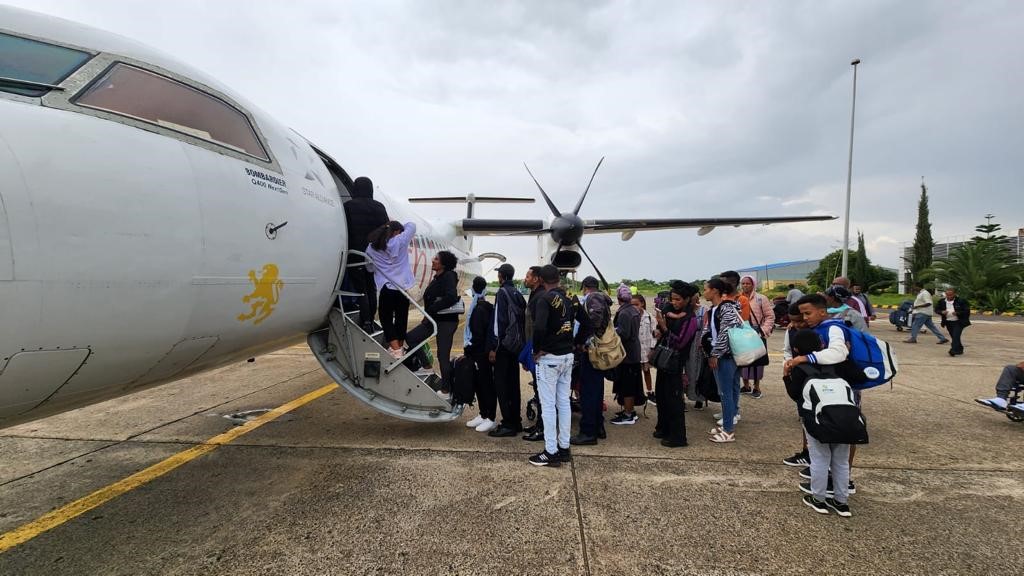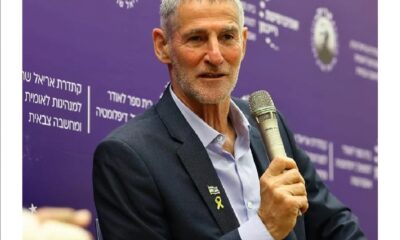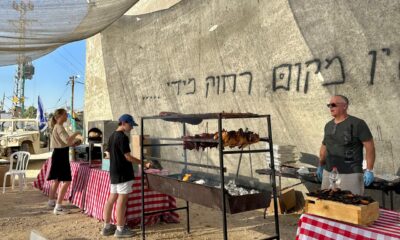
Israel

Israeli holidaying in SA coordinates Ethiopian rescue mission
Shay Felber was holidaying in Cape Town when violent clashes intensified between the Ethiopian army and Fano militia in Ethiopia’s Amhara province two weeks ago, leaving many Israelis stranded and desperate for help.
As the director of the Aliya and Absorption Unit of the Jewish Agency, it put an abrupt halt to Felber’s family holiday.
He soon found himself involved in dramatic and courageous rescue efforts to evacuate about 200 Israelis, including those eligible for aliya whose lives were in peril.
“I was at the V&A Waterfront when I received a call from my staff in Jerusalem saying that the situation was intensifying in the region and we needed to make an urgent plan,” Felber told the SA Jewish Report this week.
Amhara, Ethiopia’s second most populous region has been gripped by instability since April, when federal authorities moved to disarm Amhara’s security forces following the end of the devastating two-year war in the neighbouring Tigray region. Authorities last year also tried to dismantle the informal Amhara militia known as Fano.
According to reports, the fighting that broke out became Ethiopia’s most serious security crisis since the devastating civil war in Tigray, which ended in November, a deal brokered by the African Union in Pretoria.
The increasing volatility of the situation led to Ethiopia’s government declaring a six-month state of emergency in Amhara, the country’s second-largest region, on 4 August, following days of clashes between the military and local Fano militia. It gave the government the power to impose curfews, restrict movement, and ban gatherings.
Felber, who was the Jewish Agency shaliach (emissary) in South Africa back in 2003, immediately set to work with his staff in Israel and on the ground in the northern Ethiopian city of Gondar.
“There were three groups of people needing urgent assistance: Israeli citizens of Ethiopian origin who were visiting; olim who were in the process of making aliya; and Israeli volunteers from our Project Ten centre who do community work there,” he said.
“Although the situation appears to be calmer now, at the time we had no idea how things would play out and how long the clashes would continue, so it was an emergency and we had to rush to evacuate those in potential danger,” he said.
A situation room was set up in Jerusalem and in Gondar, and the Israeli foreign ministry put out a travel advisory urging all Israelis in the region to take shelter.
“There had been fighting across the region, flights to Gondar were suspended, the internet was down, there was little to no water, no electricity, and very little food. Following the state of emergency, I was told the streets were empty,” said Felber.
He said the complex rescue effort involved a massive team effort including the Jewish Agency along with the Israeli prime minister’s office, the foreign affairs ministry, the Israeli embassy in Ethiopia, the National Security Council, the Ministry of Aliya and Integration, and the Ethiopian government.
“We approached the Ethiopian government to allow us to have an humanitarian corridor to transport our people to the airport to get them to Addis Ababa as fast as possible.
“The roads were dangerous, and it would have been about a 15-hour journey to get from Gondar to Addis Ababa, so the only way was by air. The government agreed to assist with security, but it was a difficult situation. We really didn’t know how long the fighting would last, so we did everything in our power to save the people.”
After a few days of clashes, there was the sense that things were calming down which allowed the government to secure the airport in Gondar for a few hours during a ceasefire to allow planes to land and take off.
“We had to act fast in the middle of the night to gather everyone together to be ready to fly as soon as we got the go-ahead. The evacuees gathered at the local synagogue at the Jewish Community Centre in Gondar and a nearby hotel. There was a small window of opportunity. From there, they were transported to the airport by a couple of buses protected along the way by security forces. Four planes landed one after the other to rescue the Israelis and get them out of Gondar to the capital.”
In the space of a few days, he said, Israel arranged to extract about 200 citizens.
According to a joint statement by the prime minister’s office and the foreign ministry, Israel rescued 174 Israelis and Ethiopians eligible to immigrate from Gondar in Amhara, home to thousands of Ethiopians waiting for permission to move to Israel.
Another 30 Israelis were rescued from Amhara’s capital city, Bahir Dar.
“It was a tense few days,” said Felber. “This rescue mission is what the Jewish Agency is all about. It’s our obligation to save Jewish lives. Eighty years ago there was no-one to save Jews, now there’s the state of Israel. The Jewish Agency is responsible for Jewish life around the world, especially in cases of emergency where we need to be on the forefront of helping them. So we put all our weight behind taking these people out of a danger zone.” Felber points out that 15 000 Ukrainians have also been rescued and are being absorbed in Israel.
Jewish Agency Chairperson Major General Doron Almog said Jewish Agency staff were on the ground from the beginning, working with teams in Israel to ensure the safety of the Jews in Gondar, including volunteers from the Project Ten centre.
“We initiated this rescue operation as part of our shared commitment and strong dedication to our people. We won’t break our promise; we won’t abandon any Jew who needs our help on the ground,” said Almog.
Meanwhile hundreds of protesters rallied in Jerusalem a few days after the successful evacuation to demand that the Israeli government bring in more immigrants from Ethiopia, where thousands of people with Jewish roots remain at risk from the armed conflict.
The protesters are demanding further flights amid what they described as life-threatening conditions for thousands of people with Jewish roots in northern Ethiopia.
It’s a complicated and controversial situation, according to stakeholders.










